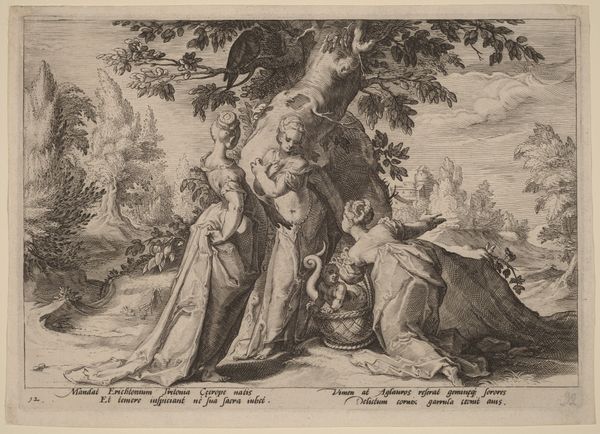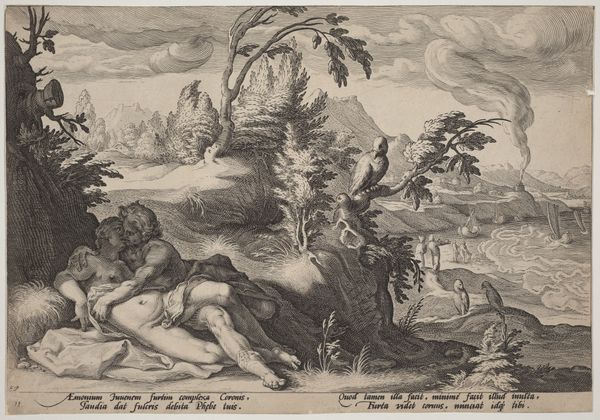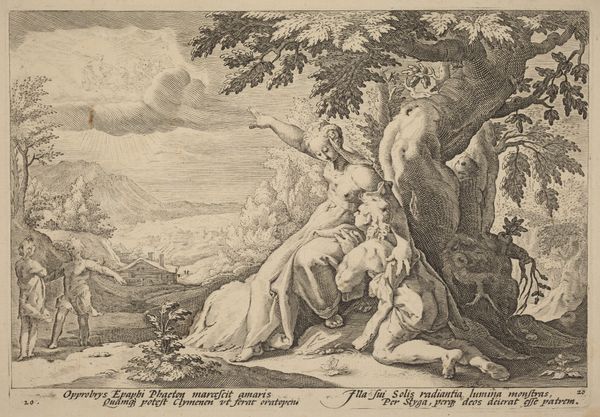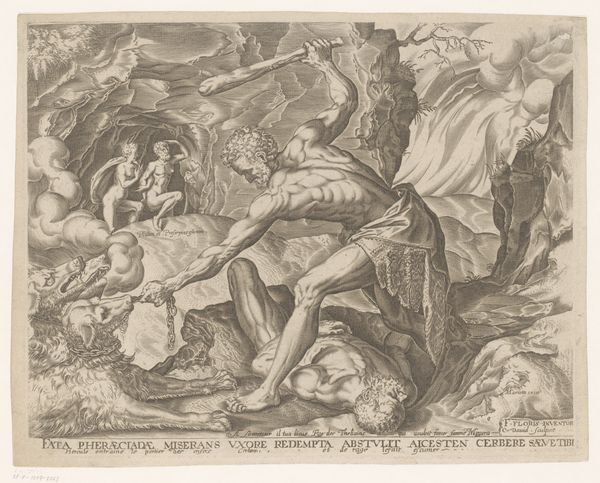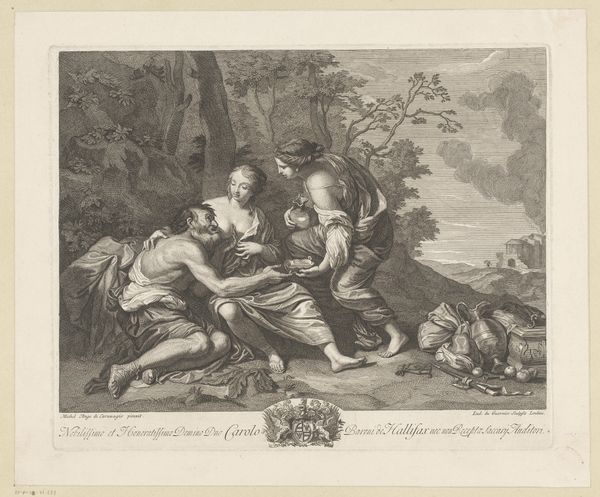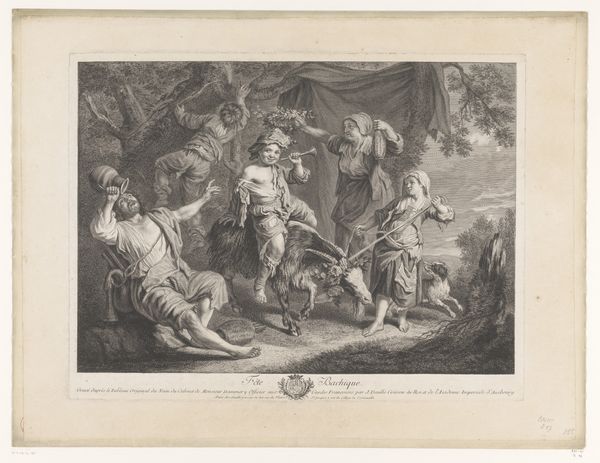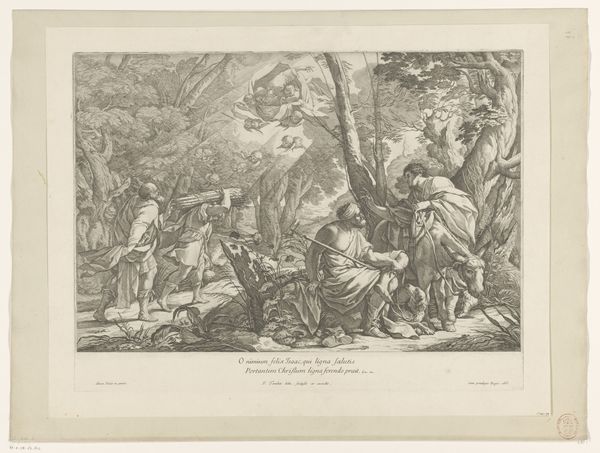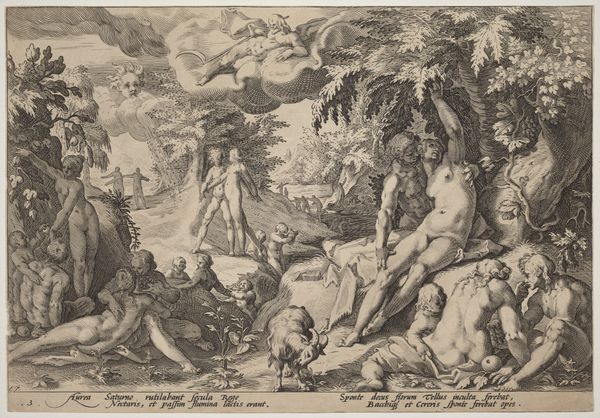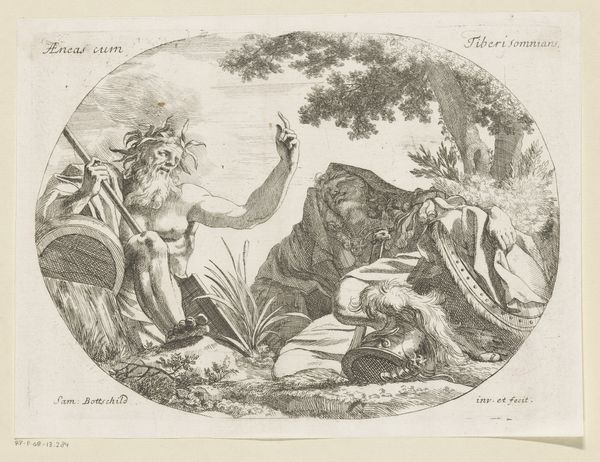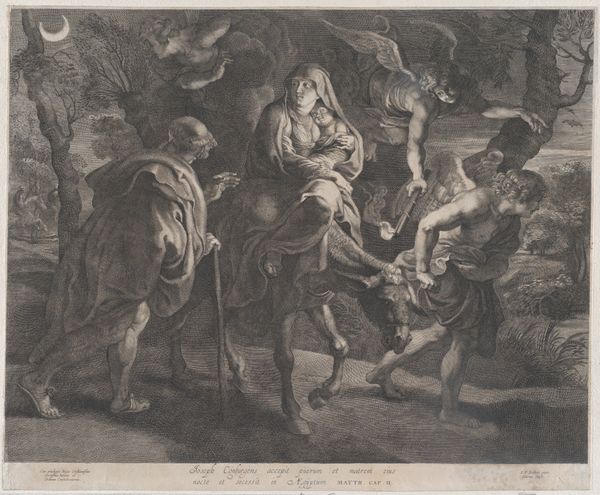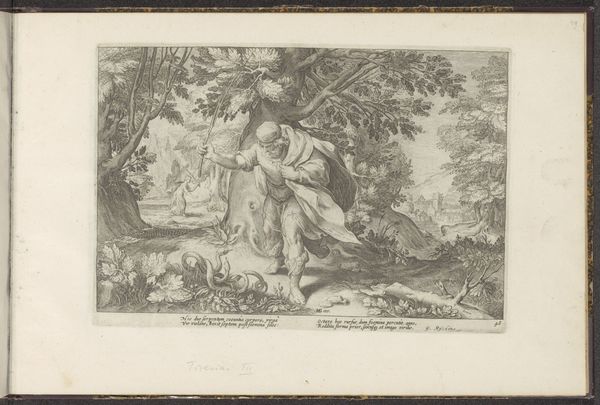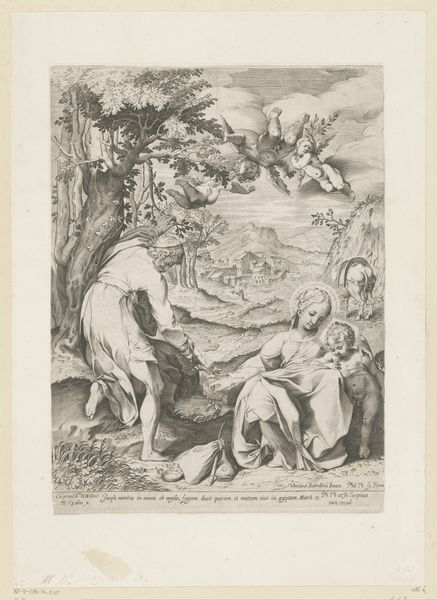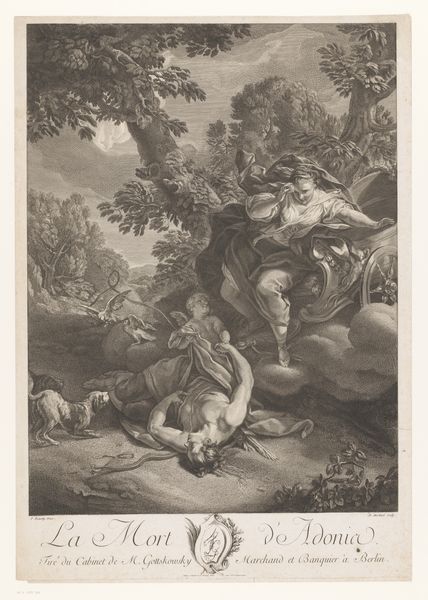
Landscape with Mercury Raising His Sword to Kill a Sleeping Argus 1589
0:00
0:00
print, engraving
#
narrative-art
# print
#
landscape
#
figuration
#
history-painting
#
northern-renaissance
#
engraving
Dimensions: sheet: 18.6 x 25.9 cm (7 5/16 x 10 3/16 in.), cut to platemark
Copyright: National Gallery of Art: CC0 1.0
Editor: This engraving is called "Landscape with Mercury Raising His Sword to Kill a Sleeping Argus" by Hendrick Goltzius, made in 1589. The landscape feels very meticulously rendered, with an impending sense of violence due to the raised sword. What do you see in this piece? Curator: From a materialist perspective, I'm drawn to the labor involved in creating this incredibly detailed engraving. Consider the physical effort and the specific tools required to transfer this scene onto the metal plate. The density of lines dictates light and shadow. What impact do you think the printmaking process, as opposed to, say, painting, has on how the narrative unfolds? Editor: That's interesting! It does feel very controlled, maybe even distanced. Like a mechanically reproduced story instead of a direct, emotional expression. Does the context of printmaking at the time play into how this piece was received? Curator: Absolutely. The print medium allowed for wider dissemination of stories and images. This particular narrative, drawn from Ovid's Metamorphoses, highlights power dynamics and divine intervention. But the print itself democratizes the myth, bringing it to a broader audience and thus making it a commodity. Who consumes this, and what purpose does it serve? Editor: So, beyond just illustrating a story, the print becomes part of a larger system of production and consumption, influencing how the story itself is understood. Curator: Precisely! The very act of reproducing this image reshapes its cultural significance, transforming a mythological narrative into a tangible object embedded in social and economic networks. Editor: That really changes how I see the piece. I was focused on the drama of the scene, but now I am more aware of its production and reception. Curator: And that understanding deepens our appreciation for Goltzius’ craft and how it exists within a much larger cultural web.
Comments
No comments
Be the first to comment and join the conversation on the ultimate creative platform.
